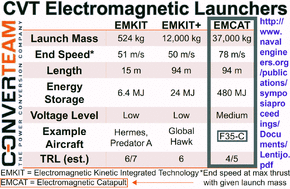The primary drive for an additional LHD will be amphibious. We have basically restructured and will continue restructuring the ADF around this amphibious capability. Which is a real and useful capability central to the ADF, which we will need to enhance and make less fragile and more capable. But it is also all the other missions and roles the LHD's do that will be further enhanced. We currently cannot form a full ARG capability, and each time we have, we have failed to do so in training because of the availability of ships. We also can't support any additional friendly's with our current arrangement, and we have based around sealift and deployment before Land400 requirements which will put significant addition to our current capabilities by a factor of two or more in mass. The argument is very strong. It has already been reported a 3rd LHD was on the RAN's wishlist as a priority, it is likely to be supported by Army as breaking the whole amphibious concept puts at risk everything, US marines in Darwin, Army procurement, etc. It is a very doable thing, and I believe is already part of RAN planning in a very limited way. A 3rd LHD is no way dependant on having to be a carrier, but it does open that possibility, something 2 ships does not allow.
The F-35B is a separate additional argument.
The P8 and E7 will not be deploy-able outside of our continental EEZ without suitable clean airspace and seaspace. We cannot rely on the US to always provide that going into the future, particularly if the US is pre-occupied with other priorities. Our new fleet of shiny subs will also be suitably limited, as will our fleet and amphibious capability. Our alliances with other SEA nations is at risk, because we can't help in that situation, and the previous belief that Australia can command the US's attention is frayed to say the least, and even if the US wants to help they are often limited in how. Which leaves other nations to either build up their capability to be able to tangle with a super power, by themselves, or be forced to give in and capitulate to said growing superpower. Australia will be forced to do the same, as we will be unable to prevent for example overflights of long ranged armed aircraft over much of our extended territory, and will be unable to deter naval incursions and actions in our extended territory.
China has built island airbases and military sites. They intend to push out from these, not push back into China. We want to be able to project power back to make a division of authority clearly further out past our home EEZ and that of our friendly neighbours. Australia is the only country capable of that in SEA. Indonesia/Singapore/Malaysia have no chance of the US setting up bases, and it would be a complete collapse of non-alignment diplomacy to do that and internally would shatter those countries. Indonesia for example won't let the US/Australia setup a military base, on Indonesian soil, even if the president wanted that, it would cause internal problems with the military and with the population. We need a movable platform. It needs to be Australia.
Our carrier aircraft won't be facing Chinese hoards of fighters over Beijing. They will be patrolling the seas around our friendlies based off a mobile platform. Preventing incursions from a few long ranged aircraft and ships and pushing the equilibrium back into waters our friendlies are not concerned about. Countries like Malaysia and Indonesia have perhaps dozens of fighters, so we won't have to do all the heavy lifting ourselves, but they can't do it all either. Singapore is very capable, but limited in depth, which is why a country of ~5 million is looking at their own carrier, and is likely to support our F-35B purchase with a purchase of their own of a significant number, most likely based in Australia.
Anything bigger than what we can handle with our assets is big enough the UK or the US would gain their attention. But at the distances we are talking about even a mighty China, their capability would be thin, particularly with other nearby nations stepping up and keeping them occupied. China has previously seemed to indicate that Australia is part of a solution to the China/US issue. Our ability to provide a non-offensive buffer is less escalating than other options.
It is about bridging the gaps, not carrying the whole load. But we can't bury our heads and pretend its still 1985.
IF we find the LHD capability is too light in the future, then I think it would be fairly simple to find a buyer for that kind of ship and move onto a more capable platform.
In terms of cost the additional cost of the F-35B over the A, and the purchase of a 3rd LHD is in reality, tiny. While there has been talk of 2% not being a hard target and capability being more important, those two elements are not significant in terms of the whole budget. You are talking about the order of a billion dollars. We wasted that much money on non-operational seasprites. At least the LHD and F-35B will be completely integrated, very low risk, and on time on budget purchases. If we are looking at cheap additional capability (not just a carrier, 3 carriers and greater amphibious capability), I can't think of anything cheaper for the level of capability. The outcome is positive across the Army, RAN and RAAF.

